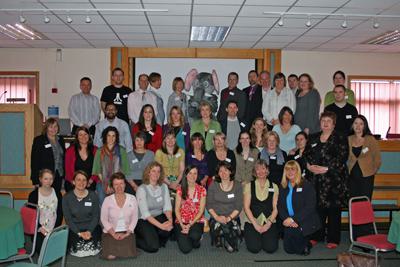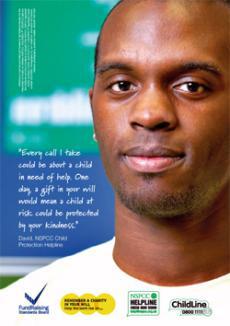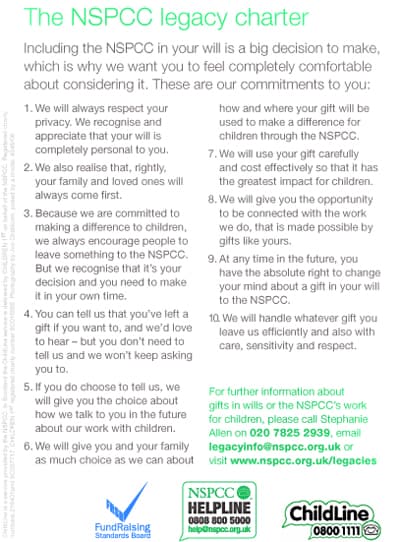NSPCC – a new approach to legacy training
Innovative angles on the fundraiser’s ‘pot of gold’, byJacqueline Gunn, NSPCC legacy marketing fundraiser and Victoria Stephenson, NSPCC development manager.
- Written by
- Adrian Salmon
- Added
- May 21, 2012
The UK’s National Society for the Prevention of Cruelty to Children (NSPCC) isn’t new to legacy fundraising – we received our first legacy gift in 1889. However by the end of the Full Stop appeal (the Society’s major fundraising initiative to mark the millennium and highlight the unacceptability of any form of child abuse), income from gifts in wills had not kept pace with the growth in our other areas of fundraising. The proportion of our total voluntary income received from legacies was much lower than other organisations with a similar number of supporters or service commitments and, most significantly, we were failing to approach legacy fundraising with the same focus, passion and creativity with which we approached other areas of fundraising.
We were therefore faced with the challenge of reinventing our legacy approach in a way that was both in keeping with our fundraising philosophy and capable of embracing and responding to the unprecedented opportunities and challenges facing legacy fundraising in the next decade and beyond.
We knew that the complex mix of factors in legacy fundraising needed to be understood and recognised before we could define a strategy and message. As an organisation that has ‘donor led’ running through its DNA, we wanted to explore this with our relationship fundraising principles and experience and mix these with a deliberate phase of openness and sheer ‘what if’. Insight would shape our approach, so we began with crafting what we thought was a starting place and then defined some key questions and threw all that into a sustained period of simply finding out.
Getting to the creation of a legacy proposition around child abuse is hard enough but we also had to first understand the whole ‘legacy thing’ much more deeply. So our research explored people’s barriers and perceptions. It tested their taboos. It explored their experience. More importantly, it tested our traditional way of legacy fundraising. Our first major realisation, which we called ‘brand promise revelation number one’, was clear; it’s not what we think that matters, it’s what the donor thinks. Not rocket science we know, especially from such a donor-led bunch – but the truth is that for many in legacy fundraising, the difficult nature of the subject can tempt us to translate our own ideas at a distance rather than work the other way. We therefore immersed ourselves in concepts, creative ideas and techniques at the expense of approach. But we found it is approach and personal experience that matters as much as the pull of the cause, or a donors’ assessment of their own priorities – and they told us loud and clear.
Our search was to articulate a legacy ask for the NSPCC but we found out much about the legacy proposition itself and that this comes way before us and our needs. So the legacy approach we had wanted to craft became very much about the way we do it as much as the what. A natural step therefore, was to meet any deep-rooted objections that a donor might have with an upfront commitment. Our ‘legacy brand promise’ was born, from which came our legacy charter. Ten simple statements were crafted that met the key issues head on: privacy, family and friends first, choice. But because we chose to create this commitment before creating all the marketing and infrastructure, we knew we ran a risk of saying one thing and doing another.

Our experience to date has been that the way we will change is through the approach, and not the other way round. The strategy is built around legacy conversations made possible by empowering all staff – not just the legacy team – to be able to talk about legacies using the charter as a means to reassure, to position ourselves, to encourage supporters to lower their guard and to begin to feel confident. Our staff training is built on the charter. New materials are guided by it.
Every fundraiser now has legacy conversation training as part of their core induction training at the NSPCC. This way we are able to share our legacy promises with those that we don’t reach through broad legacy marketing: our friends and family, our corporate supporters, our marathon runners, and in an appropriate and timely way. In turn, through these legacy conversations, relationships with key supporters are deepened and channels of communication are often opened.

The programme consists of in-depth training about the importance of legacies to the NSPCC, and how everyone in the organisation is an essential part of this. All fundraisers are able to have their own legacy conversations with their supporters and in turn, we measure the performance of our fundraisers from all teams by the number of legacy conversations that have taken place. We created a training DVD that re-enacts potential conversation scenarios: fundraisers with a corporate representative, with a branch and district volunteer, or at an event. This DVD brought to life the ease with which a legacy conversation could be started. The training programme is supported by an ongoing internal legacy promotion campaign in all NSPCC offices, reinforcing the importance of this type of fundraising.
Local groups and volunteers have been engaged using this new approach rather than traditional legacy messages. A motion reinforcing how important legacies are to the NSPCC was raised at the Annual Council Meeting, ensuring volunteer leadership from the top down. We are now developing a volunteer scheme in our branches so that every area has a legacy advocate ensuring the messages continue across the country. These people will be next in line for training. Legacy press advertising was deliberately placed to enable us to ask our volunteers for feedback, and to engage them throughout the development process. We used other promotions and activity to create what we call ‘talkability’ – subjects that prompt legacy conversations at third party events.
In other words we have begun our legacy conversation by focusing on our approach first and building a training programme around that. Feedback is good and, more importantly, we are all talking legacies, hearing stories, sharing ways forward and contemplating leaving a gift.
View the NSPCC’s earlier 16 page legacy training brochure.
© NSPCC 2010


















